Latin American cuisine is experiencing a surge in popularity, captivating taste buds across demographics and continents. As the multicultural population in the US continues to grow, the desire to explore authentic Latin American cuisine transcends backgrounds. People across the country are seeking ways to recreate these vibrant flavors in their own kitchens.
In Latin America, food is more than sustenance; it’s the heart of family life. Meals become a celebration, a chance to connect and bond over the act of cooking and sharing a delicious creation. Latin American cuisine itself is a beautiful tapestry woven from diverse cultural influences. It blends the culinary traditions of indigenous peoples with the techniques and ingredients brought by European colonizers.
The distinct flavors that define Latin American cuisine come from a symphony of spices and herbs infused into adobos (marinades and stocks) and sofritos (flavor bases). While each country boasts its own unique spice profile, there’s often an overlap in ingredients, used in varying proportions to create distinct regional dishes. This beautiful diversity is a testament to the rich history of Latin American cuisine. Each nation possesses its own culinary fingerprint, shaped by the fusion of indigenous traditions with Spanish colonial influences, all further enriched by the arrival of immigrants who brought their own culinary stories. The result? A vibrant and dynamic culinary landscape waiting to be explored.
This article delves deeper into the world of Latin American cuisine, offering 10 delicious reasons to fall in love with its flavors and embark on a culinary adventure.
Table of Contents
A Fiesta for Your Senses: Exploring the Delights of Latin American Cuisine
Travel the vibrant tapestry of Latin America, one delicious bite at a time! From Argentina’s sizzling steaks to Venezuela’s piping hot arepas, every country boasts a culinary treasure trove guaranteed to elicit an enthusiastic “¡Qué rica comida!”
Latin American cuisine is a symphony of flavors, featuring an array of ingredients like rice, beans, peppers, chilies, plantains, quinoa, beef, and fish. Each dish packs a flavorful punch, offering an unforgettable sensory experience. Forget about calorie counting – these time-tested recipes, passed down through generations, are as rich in history as they are in taste.
This vast culinary landscape caters to all appetites. Whether you crave light and refreshing appetizers or hearty and satisfying entrees, Latin American cuisine has something to offer everyone. So, embark on a delicious adventure and discover the unique flavors that each region has to offer. Buen provecho!
Argentina: Where Fire Meets Flavor – Asado and the Gaucho Legacy
Argentina takes grilling to a whole new level with its iconic Latin American cuisine dish, Asado. Imagine a feast of succulent beef, pork, chicken, chorizo (spicy sausage), and morcilla (blood sausage) sizzling over a fiery parrilla (grill) or open flame. The aroma alone is enough to make your mouth water!

This culinary tradition has a rich history, dating back to the 18th and 19th centuries with the Gauchos, Argentina’s traveling horsemen. Lacking access to proper ovens, they developed a unique technique of roasting beef over wood fires, often using quebracho trees for a distinctive smoky flavor. A special skewer called an asador allowed them to cook the meat slowly and close to the flames, ensuring perfect char and tenderness.
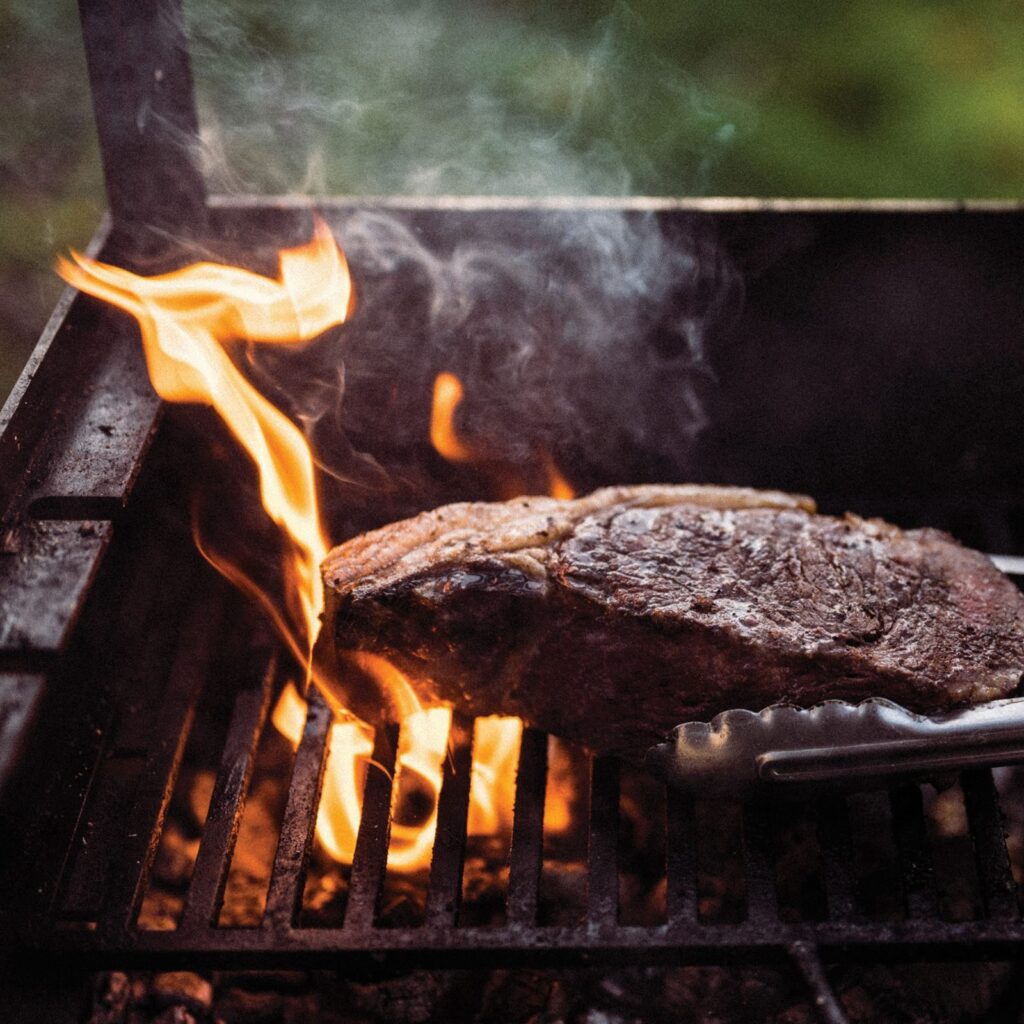
Ready to bring a taste of Argentina to your own backyard? Recreating the experience at home is easier than you might think! While an open fire adds to the ambiance, you can achieve a similar flavor using charcoal, wood, and paper to build your own mini-parrilla. Just remember, patience is key. Asado is all about slow cooking at low heat, taking an hour to two to achieve delicious results.
Bolivia’s Bite-Sized Surprise: The Salteña
Latin American cuisine offers a treasure trove of delicious surprises, and Bolivia’s Salteña is no exception. This savory baked empanada packs a flavorful punch in every bite.
Imagine a flaky, golden crust cradling a delectable filling of cooked beef, pork, or chicken. The party doesn’t stop there! A sweet and spicy gravy joins the party, along with perfectly cooked peas, carrots, and potatoes.
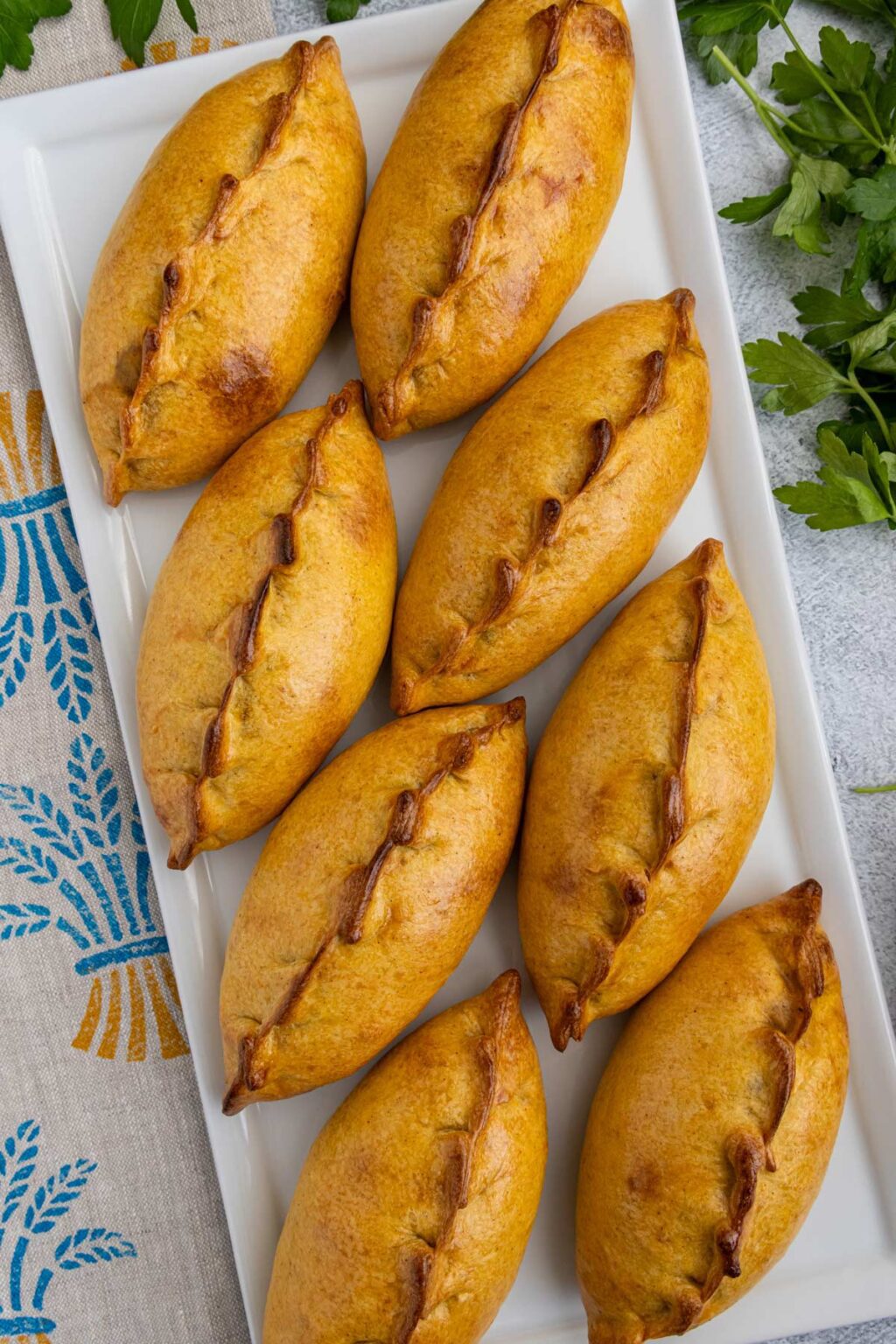
The Salteña boasts a fascinating history. Legend credits Juana Manuela Gorriti, a woman from Salta, Argentina (not to be confused with Bolivia’s city of the same name!), with its creation. Facing extreme poverty, she developed this recipe as a way to support her family. The name itself reflects this origin, with a common saying urging children to “Ve y recoge una empanada de la salteña” – meaning “Go pick up an empanada from the woman from Salta.”
Intrigued by the unique flavor profile and rich history? Making Salteñas at home is surprisingly achievable. Simply cook your chosen protein and vegetables, then combine them with a gelatin mixture for a luscious pie-filling consistency. Encase this flavorful mixture in an oval-shaped dough, fold the edges securely, and bake until golden brown. Voila! You’ve just created a delicious taste of Bolivia straight from your own kitchen, showcasing the wonders of Latin American cuisine.
Brazilian Flavors in a Bowl: Feijoada
Feijoada, a hearty and flavorful stew, reigns supreme as Brazil’s national treasure in the realm of Latin American cuisine. This soul-satisfying dish is a beautiful blend of simple ingredients, simmered to perfection to create a taste explosion.
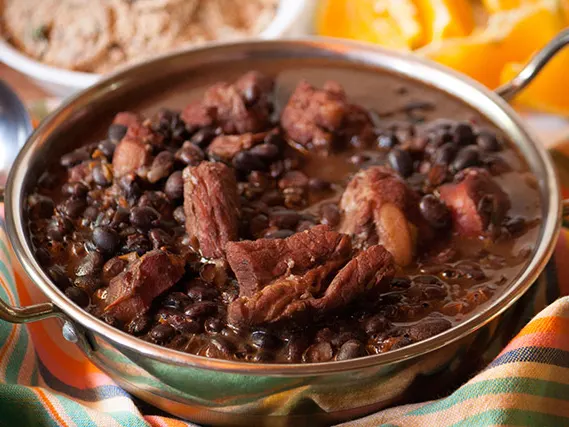
The origins of Feijoada hold historical significance. It’s believed to have been created by enslaved people in Brazil who utilized leftover ingredients for sustenance. Typically, they received scraps of meat, usually salted or smoked, along with beans.
The key lies in slow simmering the black beans for at least an hour and a half to achieve the perfect melt-in-your-mouth tenderness. Adding aromatic vegetables like tomatoes, onions, and garlic further elevates the flavor profile.
Chile’s Comfort Food Classic: Pastel de Choclo
Pastel de Choclo is a testament to the ingenuity and resourcefulness that defines Latin American cuisine. This traditional casserole is a warm hug in a bowl, featuring a delightful combination of ground beef and sweet corn. Imagine a savory filling nestled under a fluffy, golden cornmeal crust – pure deliciousness!
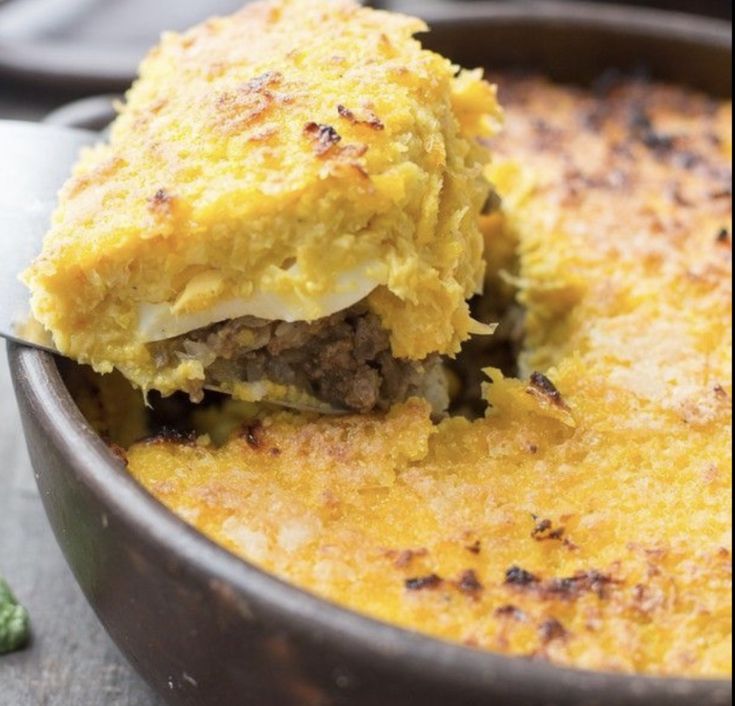
Anthropologists believe it originated during the Spanish conquest, when indigenous cooks were tasked with preparing meals that reminded the colonizers of home. These resourceful cooks cleverly used corn dough, reminiscent of empanadas, to create a comforting and familiar dish.
Making Pastel de Choclo at home is surprisingly simple. The process starts with simmering corn in milk, infusing it with aromatic basil, salt, pepper, and a touch of paprika. A touch of cornstarch thickens the mixture slightly, creating a creamy base for the ground beef filling. Once assembled, the casserole is baked until the cornmeal topping reaches a golden perfection. The finishing touch? A sprinkle of sugar for a hint of sweet contrast.
Colombian Feast For the Eyes (& Stomach): Bandeja Paisa
Latin American cuisine is known for its vibrant flavors and generous portions, and Colombia’s Bandeja Paisa perfectly embodies this spirit. Imagine a platter overflowing with a symphony of deliciousness: red beans simmered with pork, fluffy white rice, savory ground meat, crispy fried pork belly, a sunny-side-up egg, sweet plantains, and spicy chorizo. But that’s not all! This feast also includes a fluffy arepa (cornbread), a rich hogao sauce, tangy black pudding, creamy avocado, and a squeeze of fresh lemon.
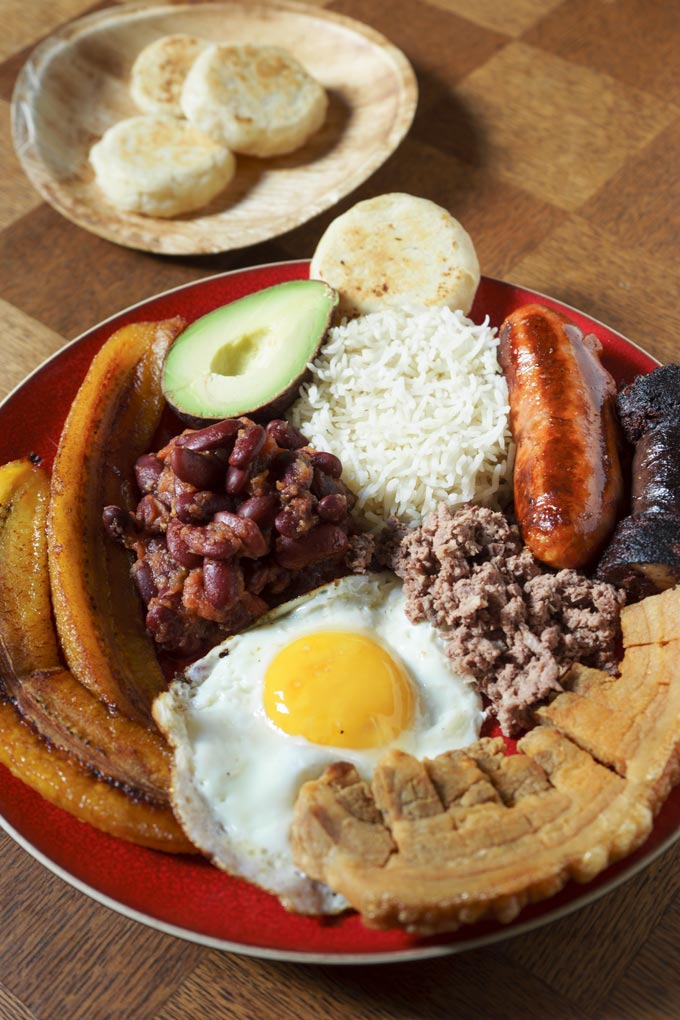
Making Bandeja Paisa at home might seem intimidating at first glance, but the reward is well worth the effort. The key to achieving that melt-in-your-mouth pork belly is a simple marinade of salt, sugar, and cumin, followed by a two-stage baking process. This ensures a perfectly cooked piece of meat that’s both juicy and tender.
Cuba: A Rags-to-Riches Dish – Ropa Vieja
Latin American cuisine is brimming with dishes steeped in history and folklore, and Cuba’s Ropa Vieja is a prime example. Literally translating to “old clothes,” this beloved dish offers a heartwarming story of resourcefulness and delicious transformation.
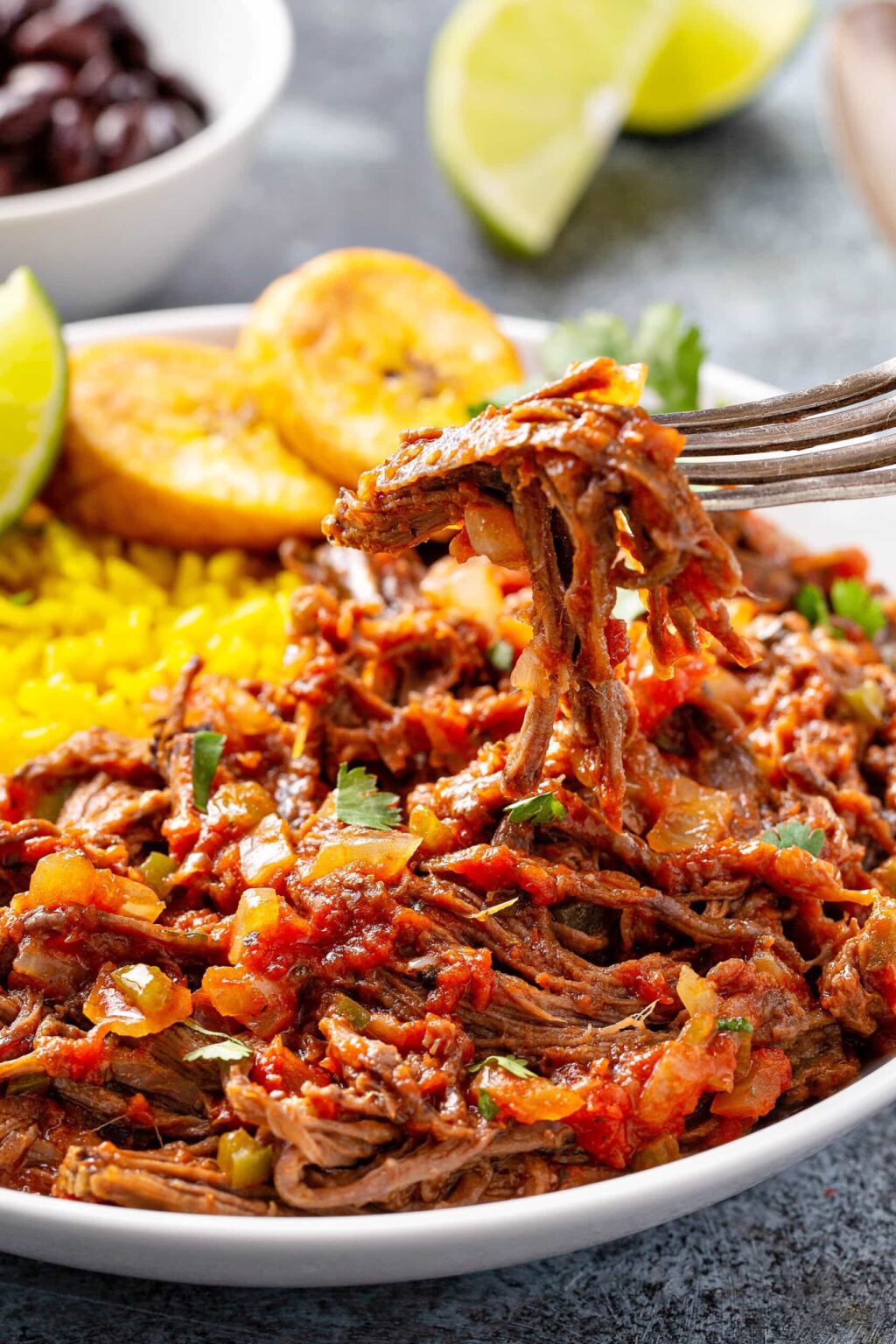
Legend has it that a poor man, desperate to feed his family, simmered his old clothes with whatever scraps he could find. Miraculously, the concoction transformed into a savory stew of shredded meat and vegetables – a testament to the power of hope and culinary ingenuity.
The star of the show is typically flank steak, slow-cooked to tender perfection and then shredded into “rags.” A mix of vegetables like onions, peppers, and tomatoes adds color and texture, while a symphony of spices like cumin and fresh cilantro infuses the dish with aromatic depth. A touch of white wine vinegar cuts through the richness, creating a truly balanced and satisfying experience.
Making Ropa Vieja at home is surprisingly simple. Simply brown the steak in a pan before transferring it to a slow cooker with your chosen vegetables and spices. Let the flavors meld for a few hours, and voila! You’ve got a taste of Cuban comfort food, a delicious reminder of the rich tapestry woven by Latin American cuisine.
Ecuadorian Ceviche
While ceviche is popular throughout the region, the Ecuadorian version boasts a unique identity, setting it apart from its neighbors.
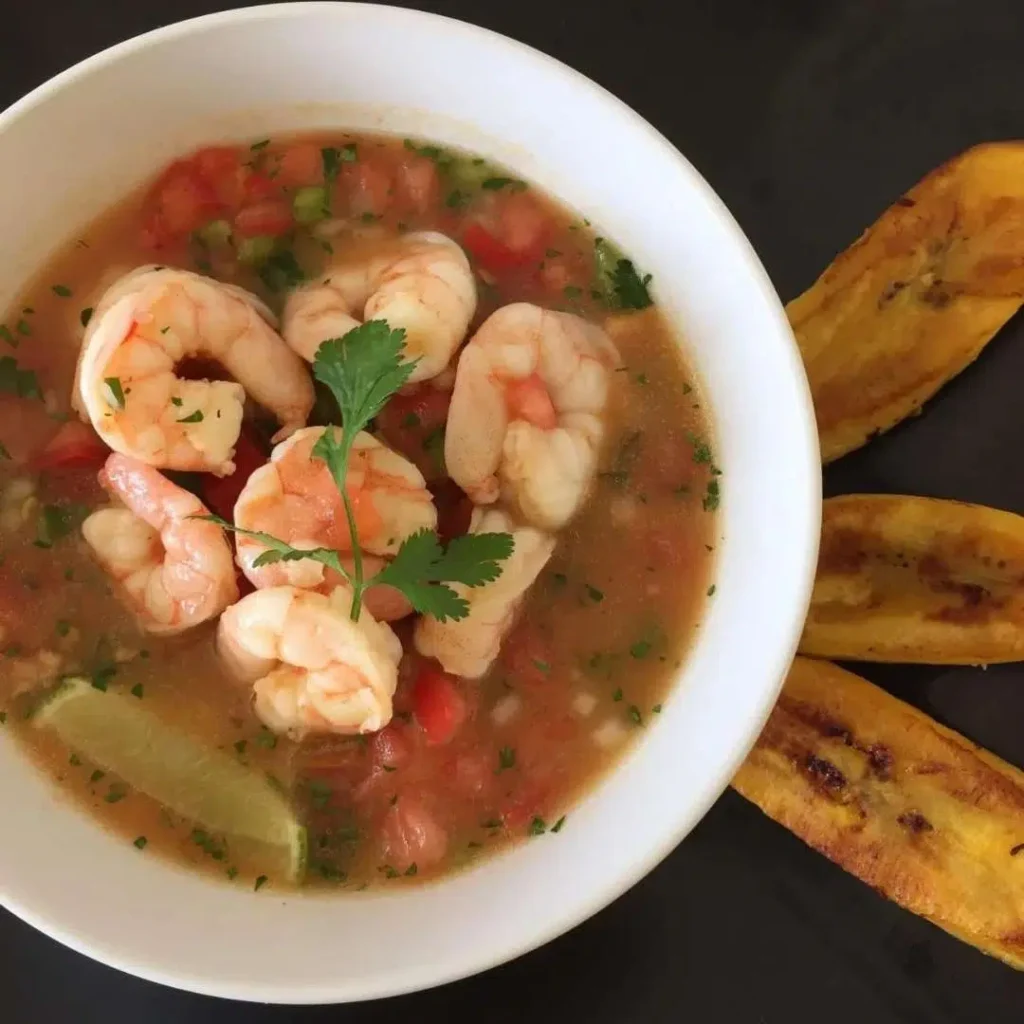
Ecuadorian ceviche combines tender, succulent shrimp with a vibrant citrus marinade, creating a symphony of textures and tastes. This delightful dish is traditionally served with crispy fried plantain chips, offering a delightful textural contrast in every bite.
Latin American cuisine is known for its historical richness, and Ecuadorian ceviche is no exception. While Peru is often credited with inventing ceviche, Ecuador has put its own unique spin on the dish. The arrival of Spanish colonists in the region brought an abundance of citrus fruits, which quickly became a staple ingredient in Ecuadorian ceviche. This citrusy twist differentiates it from the drier Peruvian ceviche, traditionally served with cooked potato slices.
Making Ecuadorian ceviche at home is surprisingly simple. The key ingredients include fresh shrimp, lime juice, onions, tomatoes, and a touch of both ketchup and mustard for added depth. Don’t forget the olive oil, orange juice, and a generous sprinkle of cilantro for a burst of freshness. Remember, the magic of this dish lies in its chilled preparation, so be sure to serve it cold for an unforgettable taste of Latin American cuisine.
Puerto Rico’s Flavorful Fiesta: Arroz con Gandules
Puerto Rico’s culinary scene explodes with vibrant flavors, and Arroz con Gandules is a shining example of this Latin American cuisine masterpiece. This iconic dish is a symphony of textures and tastes, featuring perfectly cooked rice, savory pigeon peas, and tender pork, all brought together by the magic of sofrito.
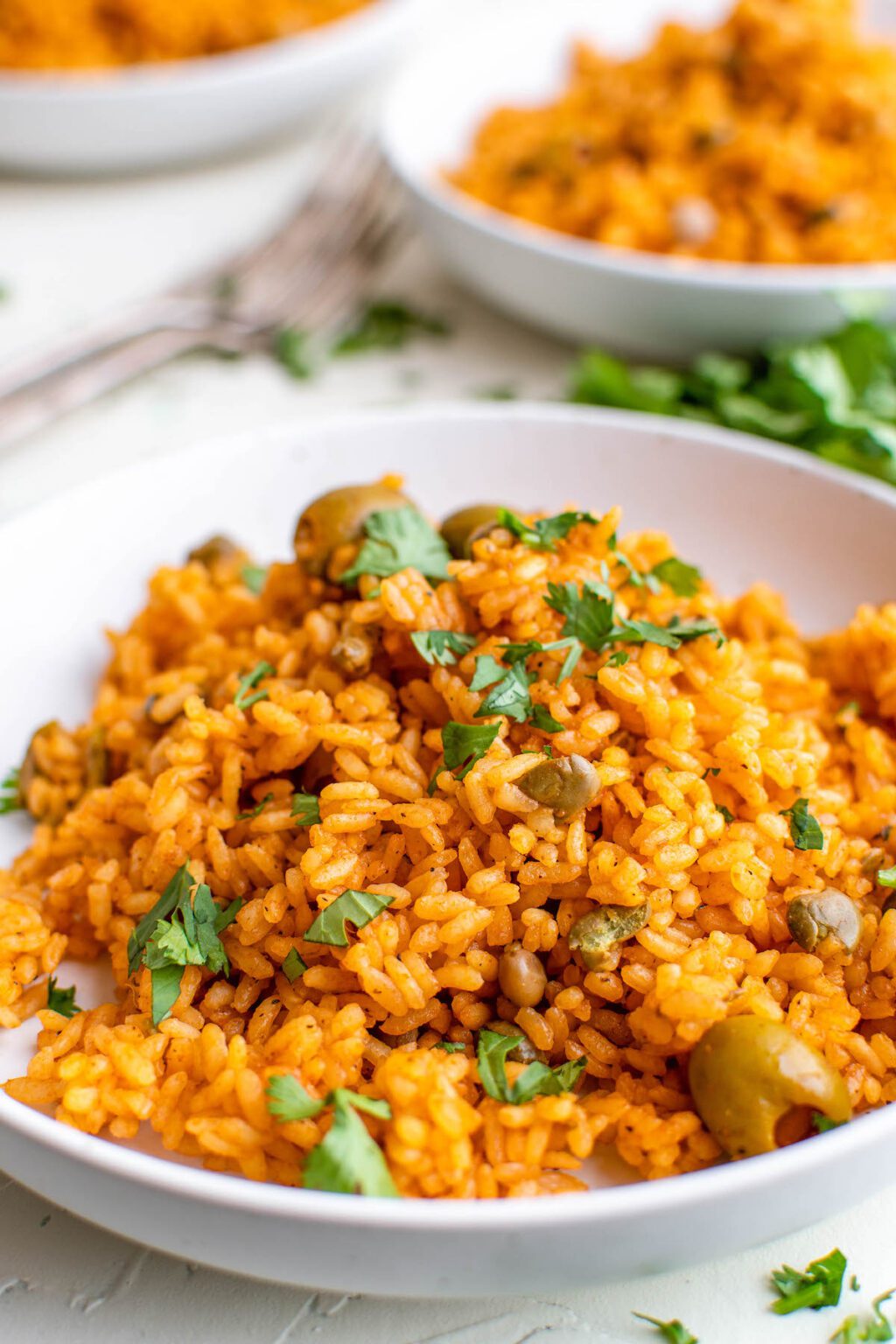
Sofrito, a sofrito being a base of aromatics like recao (culantro), cilantro, onions, garlic, peppers (aji dulce and cubanelle), and roasted tomatoes, is the heart and soul of Arroz con Gandules.
Traditionally served as a festive dish for holidays, it has a unique connection to Hawaii. When Puerto Rican workers were recruited for Hawaiian sugar plantations, they brought with them the gandule bean, a key ingredient in this beloved dish.
Making Arroz con Gandules is all about simplicity and letting the fresh ingredients shine. The beauty lies in using one pot to cook all the components together, allowing the flavors to meld harmoniously. This delicious dish is a true celebration of Latin American cuisine, offering a taste of Puerto Rico’s vibrant culture and culinary heritage.
Guatemala’s Spicy Pepián
When it comes to bold and flavorful dishes, Latin American cuisine doesn’t hold back, and Guatemala’s Pepián is a shining example. This isn’t your ordinary stew; it’s a symphony of bold spices, tender meat, and a vibrant medley of vegetables.
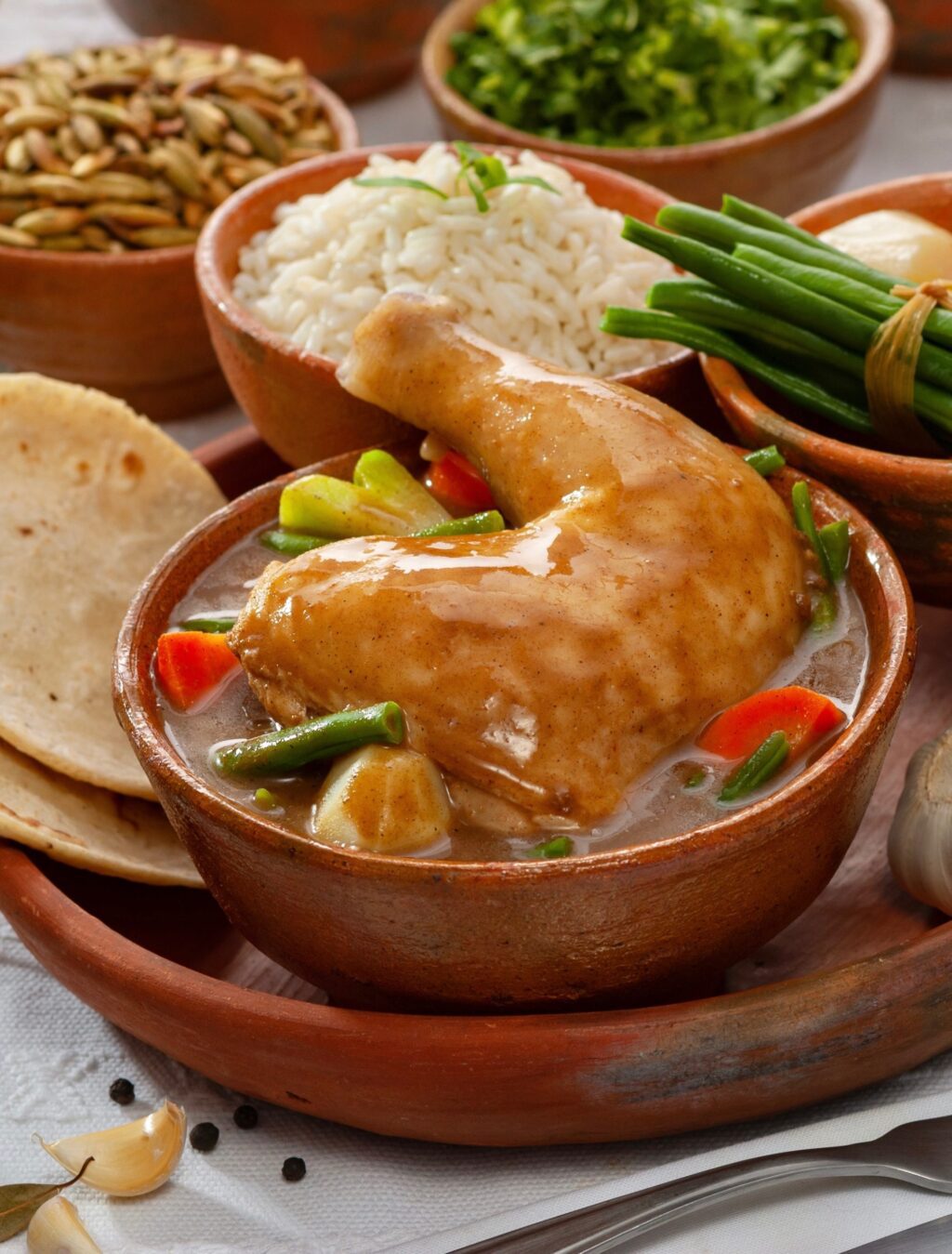
Imagine succulent chicken, beef, or pork simmered in a rich sauce bursting with chilies, aromatic seeds, and a surprising twist – fruit! Pears, squash, carrots, potatoes, and corn on the cob join the party, creating a depth of flavor unlike any other.
Pepián boasts a long and storied history in Guatemala, considered one of the country’s oldest dishes. This flavorful stew wasn’t just everyday fare – it held a place of honor at major religious and political ceremonies, a testament to its significance in Guatemalan culture.
While traditionally prepared with a whole chicken, Pepián can be adapted to your preferences using beef or pork. The key lies in the intricate blend of spices and ingredients. Think onions, fiery guaque and pasa chilies, nutty pumpkin and sesame seeds, fragrant garlic, warming black pepper, juicy roma tomatoes, and a touch of cinnamon for added depth.
Brazil’s Bite-Sized Bliss: Pão de Queijo
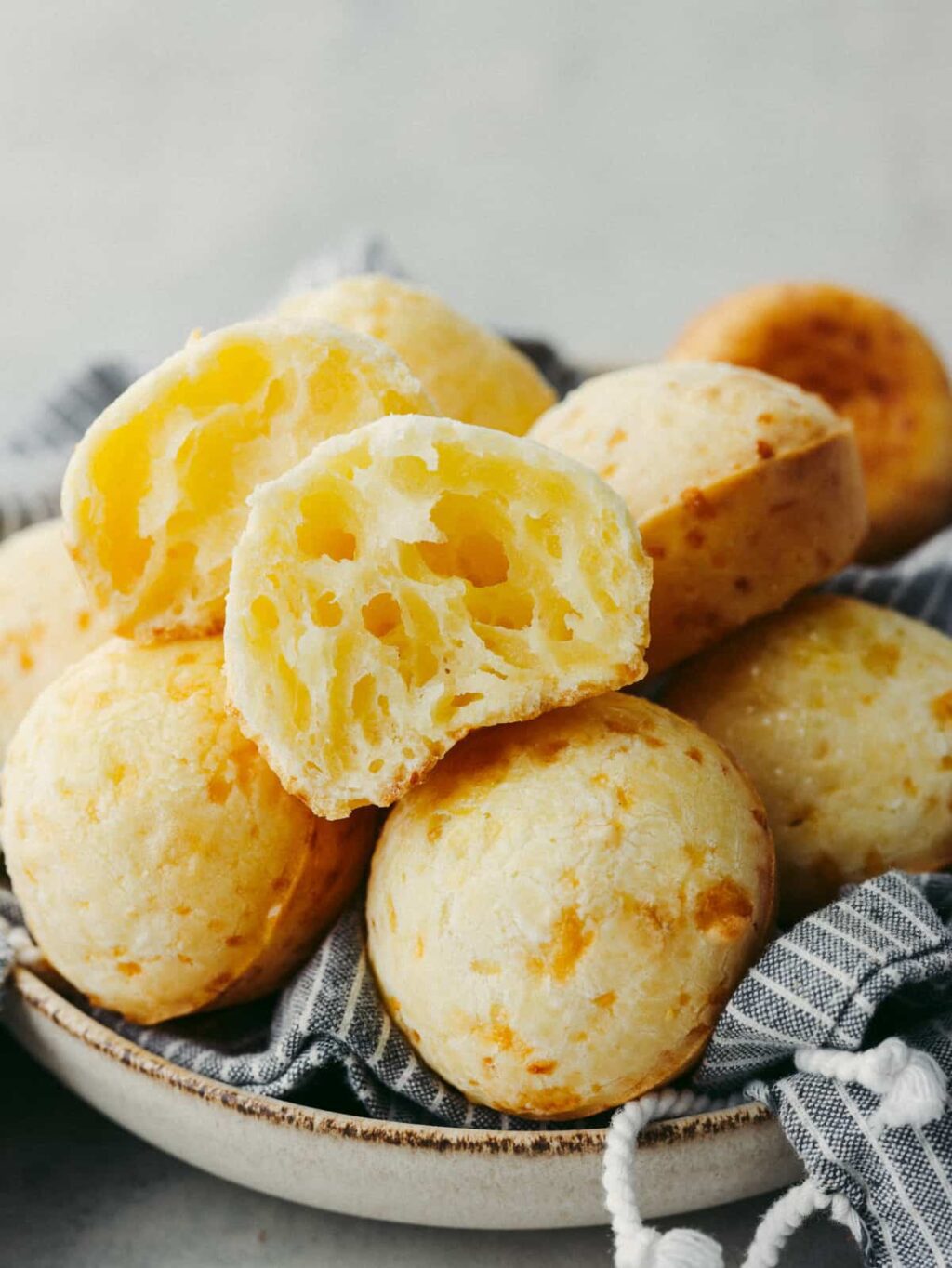
These bite-sized delights are more than just cheese balls – they’re a delicious explosion of flavor and texture. Made with tapioca flour (derived from cassava root) and bursting with cheese, Pão de Queijo is a gluten-free treat that pleases all palates.
This popular Brazilian snack has a fascinating history. Like many other culinary staples in Brazil, Pão de Queijo originated with African slaves. These resourceful cooks used their knowledge to transform the cassava root into a versatile ingredient, ultimately creating this iconic cheese bread. Today, Pão de Queijo is enjoyed throughout Brazil, savored as a breakfast treat or a satisfying snack.
La Bandera: The Dominican Republic’s Edible Flag
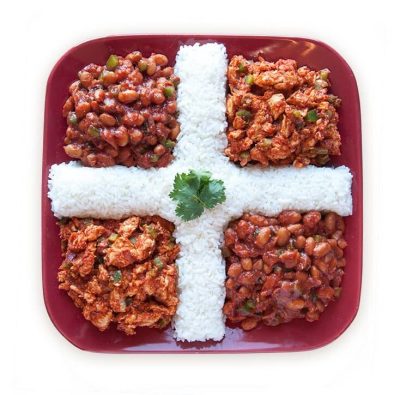
When it comes to LATIN AMERICAN CUISINE, La Bandera flies the flag high—literally! Named after the Dominican Republic’s national flag, this dish is a vibrant trio of flavors: red beans (for the crimson stripe), white rice (for purity, of course), and savory chicken (because what’s a flag without a little flavor?). Always accompanied by a fresh salad, La Bandera isn’t just a meal—it’s a bite of Dominican pride, patriotism, and a sprinkle of nostalgia.
To recreate this iconic plate of LATIN AMERICAN CUISINE at home, simmer red beans with chicken stock, tomato paste, and a splash of apple cider vinegar. Add aromatic herbs, and voilà—you’ve got a dish that waves the flag for your taste buds!
Plato Típico: Honduras’ Carnival on a Plate
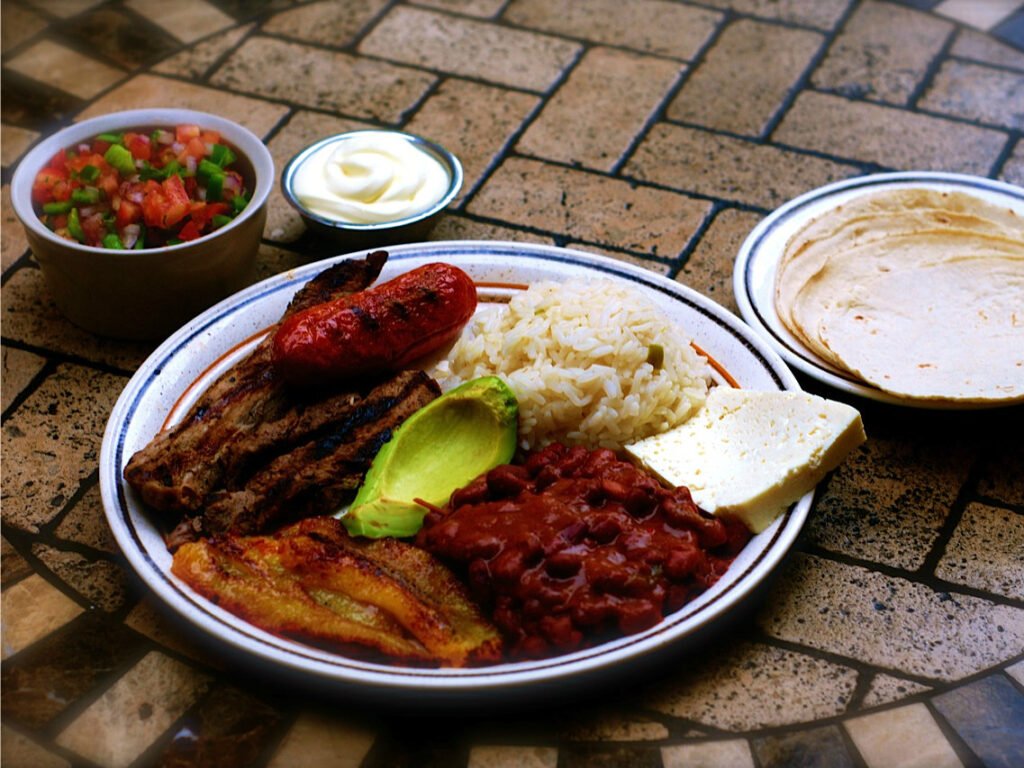
When LATIN AMERICAN CUISINE meets a fiesta, you get Plato Típico—a carnivorous carnival that packs marinated beef, spicy pork sausage, and crispy cracklings onto one delicious plate. This Honduran feast is a symphony of flavors, with fried plantain, refried beans, and rice playing the supporting roles. And let’s not forget the VIPs: creamy sour cream, tangy lime-drenched avocado, marinated cabbage, and tiny tortillas that practically beg you to pile everything on.
Historically, Plato Típico is the life of the party, combining Mesoamerican, Spanish, Caribbean, and African culinary traditions into one epic celebration. To recreate this LATIN AMERICAN CUISINE wonder, marinate your beef in sour orange juice, and load up your plate like you’re hosting the best barbecue ever!
Mole: Mexico’s Saucy Symphony
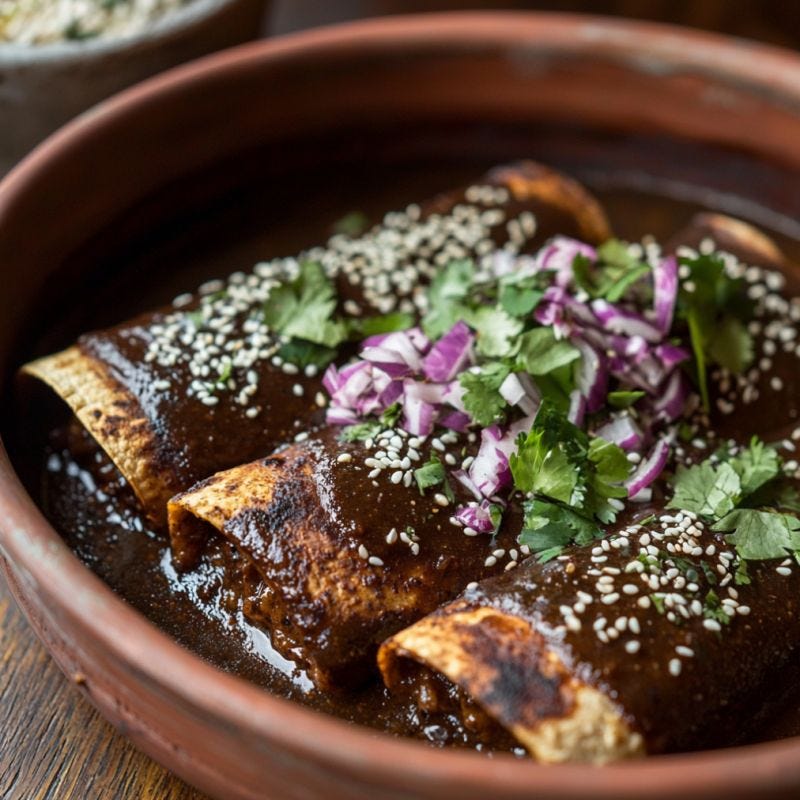
Mole is Mexico’s answer to culinary magic—a complex sauce that combines dried chiles, nuts, seeds, and yes, chocolate. Legend has it that nuns in Puebla concocted this rich, velvety wonder with whatever was lying around when the archbishop showed up for dinner (talk about pressure cooking!). Today, Mole is the delicious lovechild of indigenous and European flavors, embodying Mexico’s rich heritage in every bite.
Thinking of whipping up your own? Don’t skimp on the spicy chiles and dark chocolate—they’re the stars of the show. Drizzle it over stewed meats or enchiladas for a dish that’s nothing short of enchanting.






